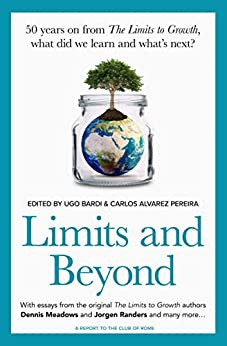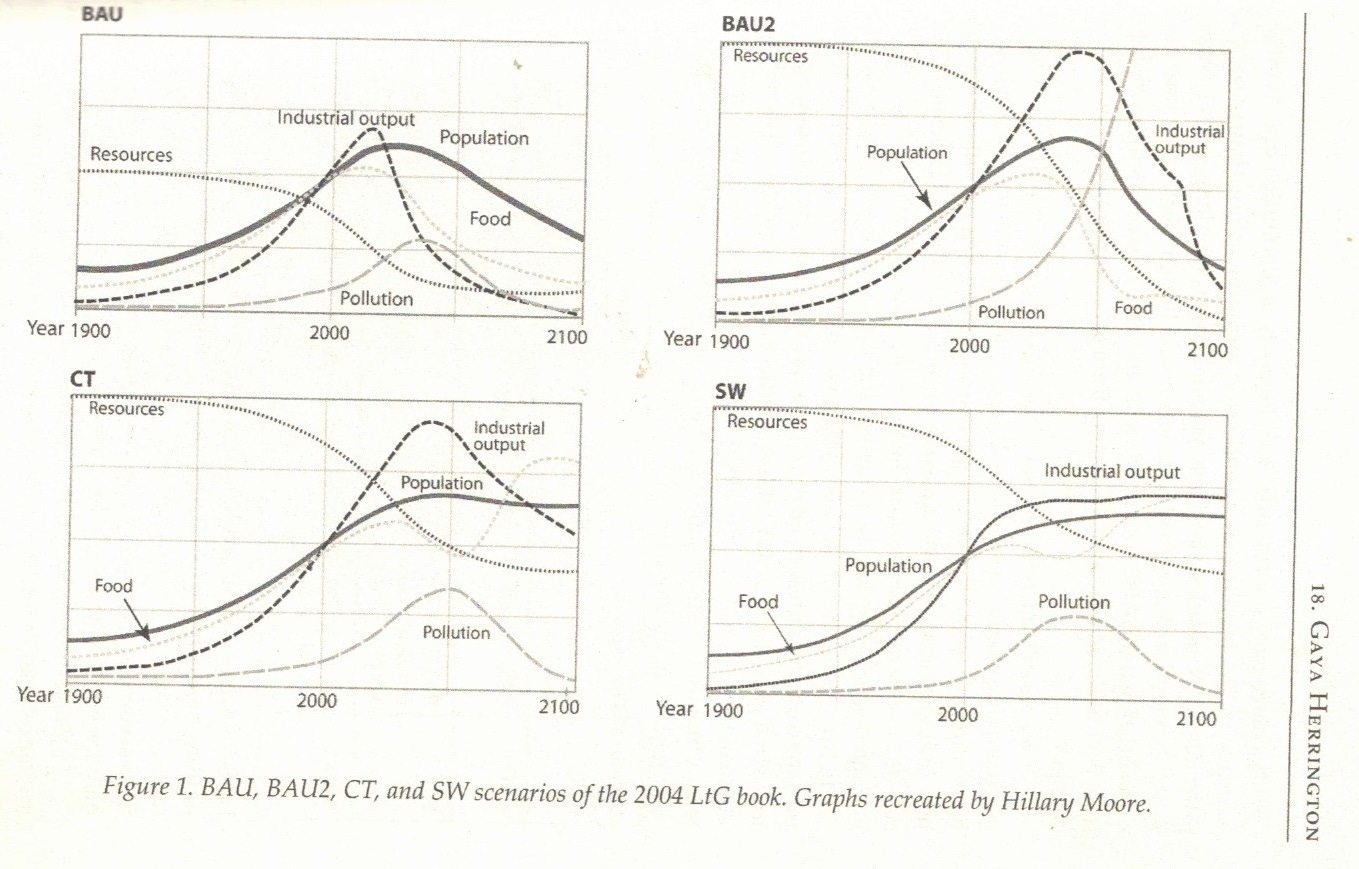All wars are wars for resources and, in modern times, they have been mostly for the resources that make the very existence of our civilization possible: fossil fuels. We all know how during WWII the attempt of the Germans to subdue the Soviet Union failed when they could not take control of the oil resources of the Caucasus. More recently, after President Carter declared that the oil resources of the Middle East are a "vital interest" for the United States (the "Carter Doctrine"), no one was surprised by the numerous wars and bombing campaigns waged by the US in the region.
Sometimes, though, the role of fossil fuels in wars is more subtle than just someone trying to steal someone else's resources. Wars may not be a question of scarcity but of abundance. That may be the case of the war in Ukraine that we can interpret as a direct result of the impact of "fracking" in the United States. During the past 10 years or so, the development of fracking led to a reversal of the static or declining production trend of fossil fuels that had been ongoing in the US for about 40 years.
The result was that American producers could reappear in the global market as exporters of both oil and gas. A potentially lucrative area where to expand was Western Europe. The problem was that the European market was in the hands of Russian producers, who had established a network of pipelines that could export natural gas at low prices to Europe. "Liquefied natural gas" (LNG) from the US just could not be competitive with pipeline gas because of the costs of liquefaction, transport, and regasification.
In the manuals of economics it is said that, in a free market, the cheaper product always wins against the more expensive one. In the real world, though, markets are far from being free. As any mafia boss can tell you, the cocaine market is not just a question of prices: you have to defend your turf. And not just that: sometimes, you can expand the area you control by friendly (or not-so-friendly) interactions with neighboring competitors. That's sometimes called "arm-twisting," but it may involve much more drastic and painful methods than just dislocating a shoulder. Similar considerations hold for fossil fuels, a market in which states normally behave exactly like mafia families.
During the past few months, we saw a case of a not-so-friendly interaction aimed at expelling Russia from the natural gas market in Europe. The war in Ukraine is mostly a sideshow: the real thing is the market of natural gas, and the critical point was the sabotage of the Nord Stream pipeline. Whoever did it, sent a clear message to everybody, not unlike placing the severed head of a horse in someone's bed: the European gas market is now the turf of another mafia family.
That does not mean that Russian exports of gas to Europe will immediately cease. Completely replacing the Russian gas would require increasing the exports from the US to Europe by about a factor of 10. Maybe not impossible, and other gas-supplying countries may step in to help. But it is not something that can be done in a short time. You can see the situation in the graphs, below. The EU states import some 150 billion m3 of gas from Russia and only about 15 from the US. The US has a total export of more than 100 billion m3, but most of it goes to Canada and Mexico via pipelines.
Hopefully, Russia will not stop sending gas to Europe using the existing pipelines. Then, a strong push toward renewable energy may help Europeans a lot. But the market is likely to behave exactly the way they say it should in the textbooks: a situation of scarcity leads to higher prices. In other words, with Europe desperate to get enough gas, producers are going to have a great time. Don't expect them to be kind to the poor Europeans: why should they be? Mafias are not supposed to be charitable institutions.
So, in the coming years, we are looking at a situation of both scarcity and high prices of gas in Europe. That will have consequences. Many European citizens, especially the poor, will have to stay in the dark and in the cold this winter, and for several winters in the future. And there will be no European leader who will declare that the European lifestyle is "not up for negotiations," as President Bush 1st said about the American lifestyle. Can you imagine Ms. von der Leyen, the never-elected president of the never-elected European Commission, saying something like that? So, the lifestyle of European citizens is going to go down the drain, and perhaps it was unavoidable that it would, one day or another. But the real question is: will the European industrial system survive the high prices of energy?
That's not obvious at all, and the Americans may soon discover that they killed the hen whose eggs they wanted. With energy prices five to ten times higher than before, European products may not be competitive any longer in the global market. That implies the collapse of the European industrial system and the return of the continent to the agricultural economy of a couple of centuries ago. It would be a return of the old "Morgenthau Plan" that aimed at doing exactly that to Germany after that WWII was over: destroying Germany's industrial economy and starving to death a large fraction of the German population. If something similar were to happen in Europe nowadays, that would also imply a certain reduction in the European population but, hey, I already noted how mafias are not supposed to be charitable organizations! And, as Ms. Victoria Nuland clearly explained to us not long ago, who cares about Europeans? They were peasants, once, so let those who survive return to tilling fields.
Below, an article that I recently published in the Italian newspaper "Il Fatto Quotidiano"
From the "Fatto Quotidiano" of 29 September 2022 (slightly modified)
by Ugo Bardi
The convulsive events on the global geopolitical scene continue to take us by surprise. What is behind the destruction of the Nord Stream pipeline? We can't say who did it, but one thing is certain: the conflict we are seeing is a war for resources much more than it is a warring war. To understand what is happening, we need to go back in time to find the roots of the current situation.
In the book "Sea and Sardinia" (1921), DH Lawrence tells us how a favorite subject in the conversations among Italians was insulting the English. It was because English coal had become expensive, something that the Italians attributed to the wickedness of the English. The term "Perfidious Albion" had been invented a long time before but was beginning to become fashionable at that time.
The history of English coal in Italy illustrates the factors still at play in the functioning of the Italian economy today. Italian industry needs energy, but there are not enough fossil energy resources in Italy to support a functioning industrial system. Thus, the industrial revolution arrived in Italy in the 19th century brought by English coal, imported by sea. But, with the end of the First World War, British coal had suddenly become much more expensive than before. It wasn't because the British were perfidious (maybe a little, but no worse than many others), it was because of depletion. As the British economist William Jevons predicted decades earlier, the costs of coal mining were rising and investments falling. As a consequence, the British coal production reached its peak in 1914, and then it began an irreversible decline. In the 1930s, coal shortages forced Italy into a deadly embrace with Germany - which could still produce it at low prices. We all know the results.
Having emerged half-destroyed from the Second World War, the Italian industry was able to rebuild itself thanks to the US oil provided by the Marshall Plan. Even for oil, however, depletion had to be felt sooner or later. In 1970, the United States reached its production peak. The first major "oil crisis" followed, but the global market could offset the decline with other sources. Meanwhile, natural gas was rapidly becoming a low-cost alternative to oil. Gradually, Europe turned to import gas from Russia via pipelines. With this relatively low-cost gas, the Italian industrial system could survive.
In the last 10 years, however, things have changed dramatically. With the technology of "fracking", the United States has managed to reverse the decline in its production of both gas and oil. As a result, they have re-entered the world market as exporters. This explains many things: the oil and gas market is strategic in the great game of world domination and, in this game, there are no rules. Pushing Russia out of the Western European market makes it possible for the American industry to take back a market they had long lost. That's what's happening. The sabotage of the Nord Stream pipeline is a signal that Europe will have to live without Russian gas, one day or another.
And now? In this global strategy game, everything is always changing. It is true that imports from the United States are now able to replace Russian gas in Europe, at least in part. But it is also true that importing natural gas from the US is only possible in the form of liquid natural gas and this involves high costs, as well as a heavy contribution to global warming due to the inevitable losses in the process. To this, we should add a fundamental unknown: how long will the United States be able to maintain its production at the levels needed to supply Europe?
Fracking has been seen as a miracle technology, but it isn't. As always, forecasts are difficult, but we can be sure of one thing: no mineral resource is infinite and sooner or later we will face the peak of fracking gas. And it all starts all over again with the frantic search for energy to keep the industrial society alive.
In Italy, we are in a position of extreme weakness. We lack the infrastructure (regasifiers) necessary to import liquefied gas. We can build them, but it will take time and, meanwhile, the Italian industry could suffer irreparable damage. It is not certain that when we have regasifiers there will be sufficient gas available to import. Not only that, but the Italian industry could find itself not competitive in the world market if it has to bear the high costs of liquid natural gas. In both cases, we could be facing the end of the industrial cycle of the Italian economy, about two centuries after its beginning. The problem is that, before the industrial revolution, there were fewer than 20 million inhabitants in Italy and famines were not uncommon.
It seems clear that for us there are no other ways out than a decisive shift toward renewables, already today much cheaper than fossil fuels and capable of completely replacing them. Politicians have not yet understood this, but moving to renewables would protect us from new crises of energy availability and from blackmail by producers. But it's not something that can be done overnight. Only a diplomatic solution to the conflict in Ukraine would give us the time needed to build a new infrastructure based on renewables. Can we make it? Nothing prevents us from trying.

.jpg)






 Bardi & Pereira did a great job with this collective book:
Bardi & Pereira did a great job with this collective book: 





